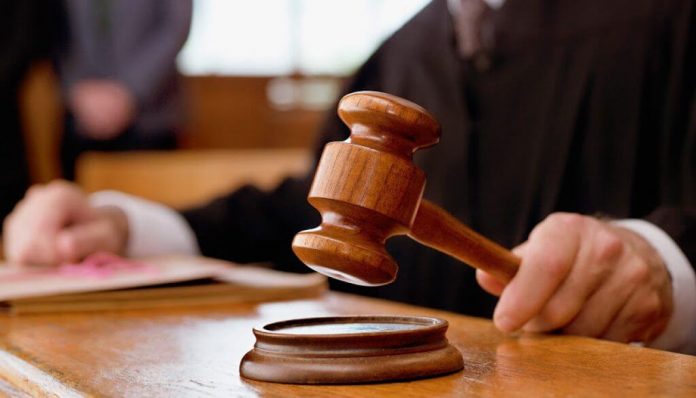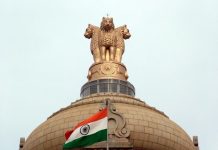This article is written by Ishan Arun Mudbidri from Marathwada Mitra Mandal’s Shankarrao Chavan Law College, Pune. This article talks about the issue of the Supreme Court lawyers getting elevated to the position of High Court judges.
Table of Contents
About the Supreme Court Bar Association
The Supreme Court Bar Association has been at the pinnacle of upholding democratic values and maintaining the independence of the India Judiciary. The affairs of the association are managed by the Executive Committee, “comprising the President, vice president, secretary, assistant secretary, treasurer, assistant treasurer, and 15 members, of whom at least 6 shall be senior advocates.” The election to the association is conducted by a three-member Election Committee nominated by the Executive Committee. The office-bearers of the Supreme Court Bar Association are elected by a secret ballot and cannot hold any office for more than two consecutive years. Recently, senior advocate Dushyant Dave stepped down as the President of the Supreme Court Bar Association. In his place, senior advocate Vikas Singh was elected as the President of the Bar.
Procedure for appointing High Court judges
The Indian Judiciary stands as one of the pillars of India’s democratic system. The Supreme Court and the High Courts are the protectors of people’s rights. The judges in these courts play a crucial part in this legal structure. Hence, these judges must be efficient and credible for the effective working of the legal system. The appointment of these judges should be transparent, accurate, and not partial. The judges should be appointed according to the provisions mentioned in the Constitution of India. Article 124 states the appointment of the Supreme Court judges and Article 217 states the appointment of the High Court. Any judge, be that of the Supreme Court or the High Court is appointed by the President of India with the consultation of the Chief Justice. According to Article 217(1) of the Constitution, every judge of a High Court shall be appointed by the President by a warrant under his hand and seal after consultation with the Chief Justice of India, the Governor of the State, and, in the case of appointment of a Judge other than the Chief Justice, the Chief Justice of the High court, and shall hold office, in the case of an additional or acting Judge, as provided in Article 224, and any other case, until they attain the age of sixty-two years. Provided that:
- A judge may, by writing a letter addressed to the President, resign from his office.
- A judge may be removed by the President according to the provisions given in Article 124(4).
- The office of a judge shall be vacated by his being appointed by the President to be a Judge of the Supreme Court or by his being transferred by the President to any other High Court within the territory of India.”
In the case, SP Gupta v. President of India (1981), also known as the First Judges Case, the Supreme Court held that “primacy” of the Chief Justice of India’s (CJI) recommendation on judicial appointments and transfers can be refused for “cogent reasons.” This judgment gave the Indian Judiciary executive primacy with regards to the appointment of the judges for the next 12 years. The majority opinion was that the opinions of the Chief Justice of India and opinions of the Chief Justice of the High Court were merely consultative and that the power of appointment solely resides in the Central Government.
A collegium is a system for the appointment and transfer of judges and was first introduced in the case Supreme Court Advocates-on-Record Association v. Union of India (1993) known as the Second Judges case. In this case, the Supreme Court ruled that the senior-most judge of the Supreme Court should alone be appointed as the Chief Justice of India. The Court further stated that the initiation of the proposal for appointment in the case of the Supreme Court must be by the Chief Justice of India, and in the case of a high court by the chief justice of that high court. Thus, it is for the concerned chief justice of the high court to initiate the proposal for the appointment. Besides, the high court chief justice must ascertain the views of the two senior-most judges of that court and incorporate the same in their recommendation. There is no mention of the collegium system in the Constitution as well as in its amendments.
In Re: special reference 1 of (1998) also known as the Third judge case, was not a case as such but an opinion delivered by the Supreme Court. It was held that the term consultation with the Chief Justice of India which is mentioned in Article 217(1) and Article 222(1) of the Constitution requires consultation with other judges also to form an opinion. The SC further expanded the collegium to a five-member body consisting of the Chief Justice of India and four other senior-most judges.
Thus, the rules stated in these three judge’s cases have been followed for the appointment of judges in the Supreme Court and the High Court. Hence accordingly, the High Court collegium which consists of the Chief Justice of the High Court and four other senior-most judges sends the recommendations for the High Court judgeship to the Supreme Court collegium. The Supreme Court Collegium can either approve the recommendation and then transmit the same to the Government of India for giving effect to it, or it can disagree with the high court collegium or defer the proposal. Further, there is a Memorandum of Procedure, a document providing for the appointment process, in consultation with the Chief Justice of India. It also states that if the Chief Minister of a state desires to recommend the name of any person, then they should forward the same to the Chief Justice for consideration. For a person to be a High Court judge, he/she must be a citizen of India, should not be more than 62 years of age, and for at least 10 years, be an advocate of the High Court or two or more such courts. A High Court judge is liable to get transferred to other High Courts. This decision is entirely dependent on the Chief Justice of India. Transfer of judges is done to ensure proper and just trial for every case fought in the court of law and is mentioned in Article 222. Further, the salaries of the High Court judges are mentioned in Article 221. The salaries shall be determined by the Parliament.
Elevation of Supreme Court lawyers as High Court judges
The appointment of Supreme Court lawyers as High Court judges has been in the news recently. Newly appointed Chief Justice of India NV Ramana has put out a request to the Chief Justices of the High Courts to elevate the position of the Apex court’s lawyers as High Court judges.
SCBA President, Vikas Singh’s comment that Supreme Court lawyers are more meritorious than those practising before High Courts
The buzz around the elevation of the Supreme Court lawyers as High Court Judges started, with a letter written by the current Supreme Court Bar Association President Vikas Singh to the Chief Justice of India, NV Ramana. Mr. Singh in his letter stated that the Supreme Court lawyers are not often elevated for the positions of High Court judges because of a certain lack of practice in the High Court. He had further stated that competent women lawyers should also be elevated for the position of the High Court judge. Singh stated that the SCBA has constituted a search committee which consists of six members of the Bar including him. This committee will recommend the names of the deserving Supreme Court lawyers for the process of elevation.
Can the decision be challenged constitutionally
The Chief Justice of India is the most important person in the Indian Judiciary. Although the appointment of the judges of the Supreme Court and the High Court is done by the President, the Chief Justice also plays a crucial role in this regard. According to Article 224A of the Constitution, the Chief Justice of a High Court may at any time, with the previous consent of the President, request any person who has held the office of a Judge of that court or of any other High Court to sit and act as a Judge of the High Court of that State. The appointment of the retired judges in the High Courts is also provided in this article.
The demand for an elevation in the position of Supreme Court lawyers was made by the SCBA President Vikas Singh but, is it that easy to implement such a request? The SCBA is a private entity and the constitutional provisions regarding the appointment of judges do not mention a private entity’s involvement. Further, the SBCA does not mention whether its search committee will select the names of lawyers for elevation to forward to the CJI, who will, in turn, send them to the high court or the high court chief justice directly. The Supreme Court lawyers do not have the practice of arguing in front of the High Courts so, if the SBCA sends the recommendations directly to the High Court, the Chief Justice of the High Court might find it difficult to form an opinion regarding these Supreme Court lawyers. If the SBCA’s proposal is accepted, then the other Bar associations might also start recommending names for elevation or appointment, which might create ruckus and chaos. The proposal also may affect the rights of the States. Every state has a right to have people from their land as High Court judges because they are more familiar with local state laws and culture.
Professional diversity in the Apex Court
The COVID 19 pandemic has had an impact on not just the appointment of the judges but also, the working of the Indian Judiciary. Due to the lockdown, the delivery of judgments has been slow and there is a huge backlog of cases. Professional diversity in the Judiciary has been a contentious issue. Out of the first 25 judges appointed to the Supreme Court of India, only three had any experience in the subordinate judiciary. In the first four decades after Independence, of all the Chief Justices in the Supreme Court, only one was from the subordinate judiciary. This issue of professional diversity can also be seen in the subordinate courts and the High Courts. The High Court judges appointed between 1999 and 2015 show that only 30 percent of such judges were from the subordinate judiciary. This sort of homogeneity can be seen not only in the appointment of judges but also, in the tenure of such judges. However, in current times the situation is different. It is highly unlikely for a judicial officer to be appointed as a judge in the Supreme Courts or even the High Courts.
Conclusion
The appointment of judges in any country has to be a transparent process. Homogeneity of any kind is undesirable and must not be tolerated. The judges should be reliable and competent and the appointment of judges should not be done with any sort of bias or partiality. As there is a backlog of cases and vacancies need to be filled, the Government and the Judiciary must work together and find ways to improve the system for the betterment of the people and the country.
References
- https://theprint.in/opinion/indias-higher-judiciary-lacks-professional-diversity-its-now-a-monopoly-of-lawyer-judges/675881/
- https://www.ndtv.com/india-news/chief-justice-of-india-for-elevation-of-supreme-court-lawyers-as-high-court-judges-2459481
- https://timesofindia.indiatimes.com/city/chennai/fight-for-hc-judge-posts-at-the-cost-of-democracy/articleshow/83618340.cms
- https://www.newindianexpress.com/nation/2020/may/27/lawyers-letter-to-cji-and-judges-alleging-apparent-indifference-to-humanitarian-crisis-by-sc-2148747.html
https://t.me/joinchat/J_0YrBa4IBSHdpuTfQO_sA
Follow us on Instagram and subscribe to our YouTube channel for more amazing legal content.












